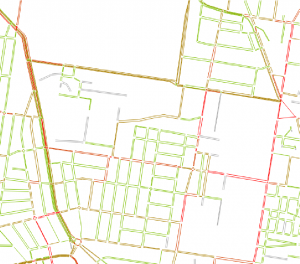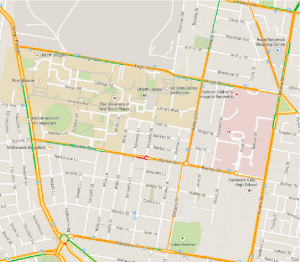 By Associate Research Fellow Johan Barthelemy
By Associate Research Fellow Johan Barthelemy
Transportation plays a key role in societies. The transportation system of a country is closely related to development of its economy by meeting the travel demands of people, and allowing the transport and the exchange of resources. Nevertheless, transportation is also endowed with negatives effects: growth of transportation demand can lead to an increase of accidents, environmental issues such as air and noise pollution, and energy consumption. Understanding and predicting the dynamics of transportation systems has then naturally become a major research field since the beginning of computer assisted transport simulations in 1955.
Traffic flows simulation represents a central part of traffic micro-simulators. This component executes the daily plans of simulated individuals in a physical environment, that is, it represents the traffic flows dynamics on a road network.
In collaboration with Professor Timoteo Carletti from the Namur Center for Complex Systems at the University of Namur (Belgium), we are currently designing a micro-simulator at SMART. The design of this micro-simulator relies on the assumption that travellers use routing policies rather than static paths, leading us to introduce the possibility for each simulated agent to apply, in real time, a strategy allowing him to possibly re-route his path depending on the perceived local traffic conditions and the time already spent travelling. If the agent chooses to re-route, then she or he computes a new shortest-path that avoids the congested link, keeping unchanged the destination.
The re-routing process allows the agents to directly react to any change in the road network. This removes the need to restart the whole simulation process, and consequently decreases the computational cost with respect to more classical approaches. Additionally, as the agents use only local information, the network topology does not matter; the strategy is able to cope with any arbitrary large networks.

Predicted congestion by the new traffic micro-simulator on the links around the University of New South Wales located in Sydney at 8:00 am.
Transport simulation typically involves a large number of agents moving across a road, networks which in turn can be relatively complex. Consequently, the sheer size of the problem requires a tremendous amount of parallel computational resources, which are available for modern processing units (GPUs). Hence, the next steps of this research include porting this model to a NVIDIA GTX980 GPU device recently provided by NVIDIA through their Hardware Grant Program.

